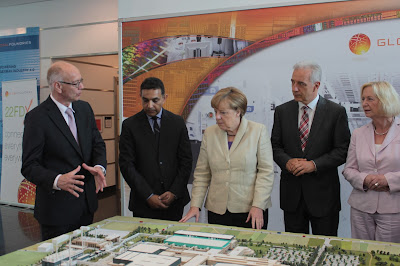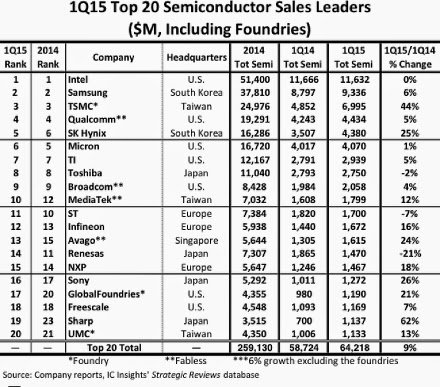Good news of ALD - Gartner has forecasted a growth for the Advanced nodes to come!
Gartner says that the Worldwide semiconductor revenue is forecast to reach $348 billion in 2015, a 2.2 percent increase from 2014, but down from the previous quarter's forecast of 4.0 percent growth, according to Gartner, Inc.
Growth forecast for Wafer Fab Equipment according to Gartner (Graph from ASMi Investor Technology Seminar at SEMICON West)
"The outlook for the major applications that drive the semiconductor market, including PCs, smartphones, and tablets, have all been revised downward. This, combined with the impact of the strong dollar on demand in key markets, has resulted in a lower semiconductor forecast for 2015," said Jon Erensen, research director at Gartner. "The typical second-quarter bounce did not materialize this year, and as a result, the semiconductor industry is more back-end loaded and dependent on a strong third-quarter rebound, driven by Windows 10 and the ramp-up to the holiday season.”
From an application point of view, smartphones and solid-state drives (SSDs) will continue to drive semiconductor market growth, while the traditional PC segment will experience the greatest decline, with production units down 8.7 percent in 2015, slightly weaker than the previous quarter's forecast. "Inventory in the PC market remains high despite vendors looking to clear the supply chain in anticipation of Windows 10 and Intel's Skylake products. Any issues with the launches of Windows 10 or Skylake in the third quarter of 2015, which are expected to reinvigorate PC sales, could lead to further decline," said Mr. Erensen.
In the smartphone market, Apple's iPhone is the bright spot for the market with strong unit growth and increasing average selling prices (ASPs), driven by the strong performance of the iPhone 6 and iPhone 6 Plus. However, lackluster performance in high-end Android smartphones and general softness in the smartphone market in China will continue to impact growth.
Although the wearables market, including smartwatches, head-mounted displays (HMDs), smart glasses and Bluetooth headsets, is a growing industry, revenue for wearables semiconductors — processing, sensing and communications chips — will represent only 1 percent of total semiconductor revenue by 2019. Smartwatches are the top semiconductor growth in the near term.
From a device point of view, DRAM continues to be one of the primary growth drivers of the overall industry. DRAM revenue is expected to increase 3.8 percent in 2015, following a 32 percent increase in 2014. However, Gartner expects an oversupply (or "underdemand") to develop in 2016 as limited new capacity comes online and technology migration continues. DRAM industry revenue is expected to decline 17.4 percent in 2016 and 7 percent in 2017.
"The typical second-quarter bounce did not materialize this year, and as a result, the semiconductor industry is more back-end loaded and dependent on a strong third-quarter rebound, driven by Windows 10 and the ramp-up to the holiday season," said Mr. Erensen.



%20(1).png)













